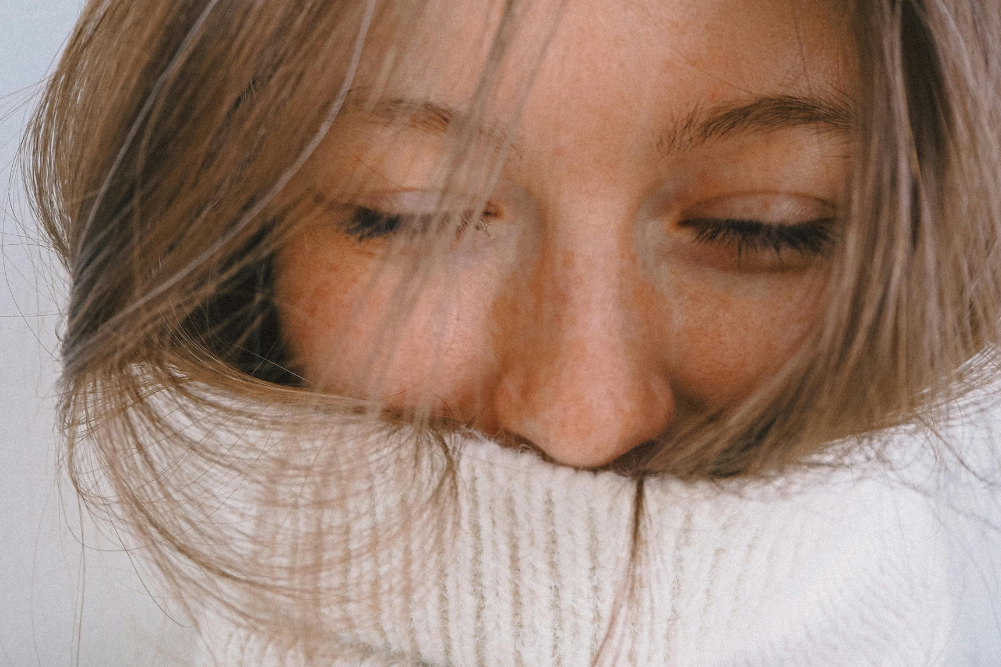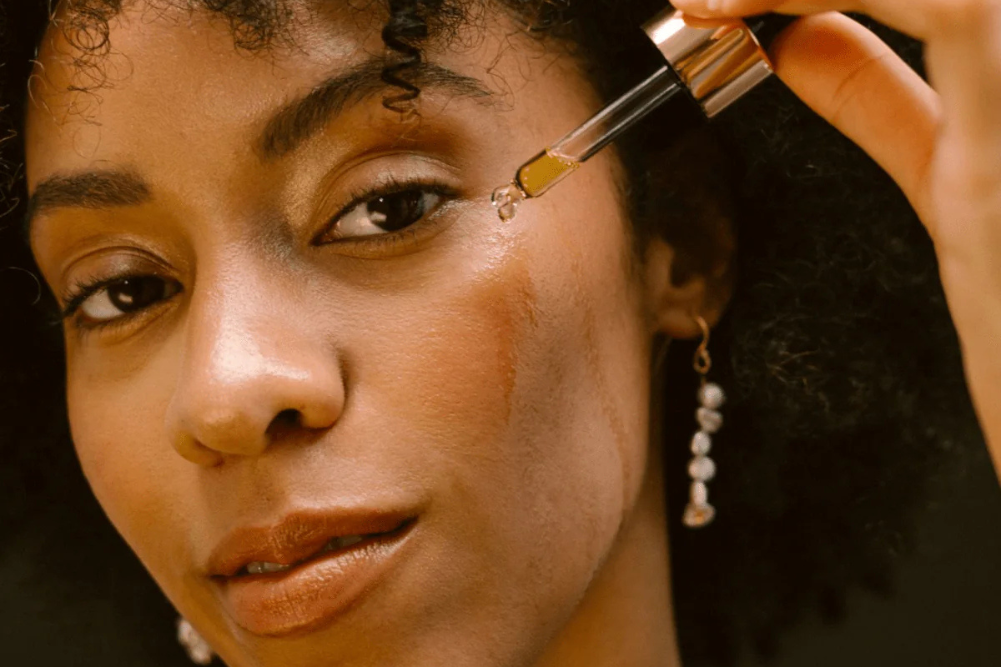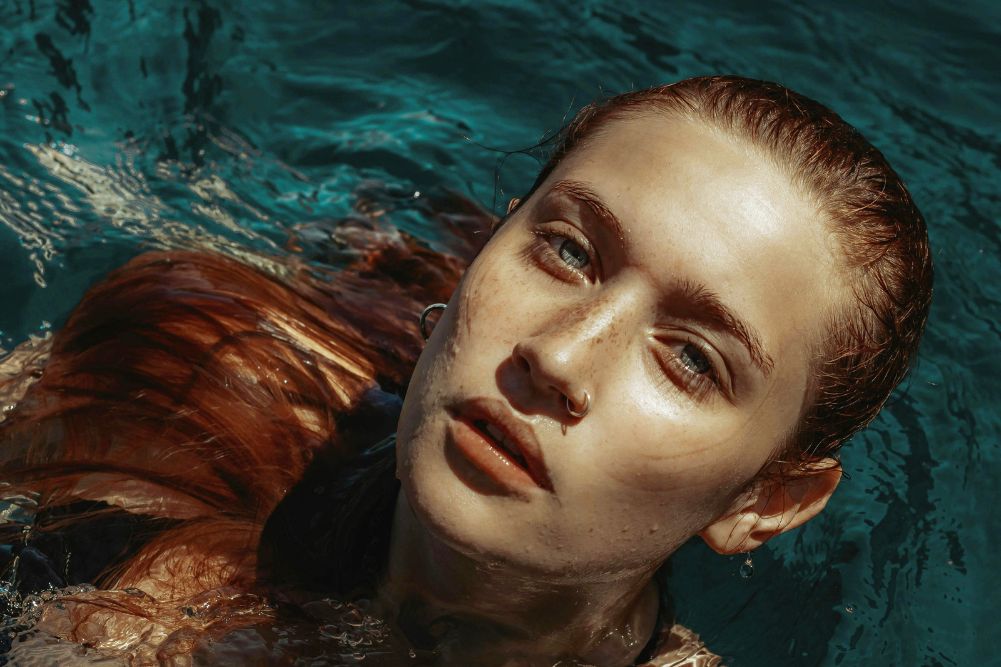The winter-proof beauty guide
From dry, lacklustre skin to static-prone hair, winter brings a handful of beauty woes. They don’t however, have to define the season. Discover how to keep your glow and embrace the cold season well and beautifully with a bit of winter beauty advice.
Winter is a paradox. It’s a season of cosy moments, nourishment and comforts, yet it can also be harsh and ruthless. The colder months can really have an impact on your skin, hair and overall vitality. Just as you instinctively swap breezy linen for layers of cashmere when the temperature drops, your beauty routine deserves the same seasonal shift.
The drop in humidity, coupled with indoor heating and a natural tendency to move less and crave richer foods, alter the body’s rhythms. It affects everything from circulation and lymphatic flow to skin regeneration and hair health. But year-round beauty isn’t about resisting the seasons — it’s about working with them. From dry, lacklustre skin to static-prone hair, winter brings a handful of beauty woes, but they don’t have to define the season. By winter-proofing your beauty routine, you can glide through the chilly months feeling as resilient and radiant as ever. Here are some of the most common cold-weather concerns and how to beat them.
Dry, dull skin that feels like parchment
Winter air is a moisture thief. The low humidity outside and artificial heating indoors create an environment where water evaporates from the skin more quickly. The skin is left tight, rough and prone to irritation. Compounding this, cold temperatures slow circulation, meaning fewer nutrients reach the skin’s surface, affecting its glow and ability to repair.
The fix: Think deep hydration and skin barrier support. Swap foaming cleansers for cream or oil-based formulas that cleanse without stripping. Then layer a hydrating serum containing active ingredients. Like ultra-plumping hyaluronic acid and brightening vitamin C. Then, locking it in with a rich moisturiser containing ceramides. Research has found that ceramide enriched moisturisers reduced transepidermal water loss (TEWL) by 26 per cent, reinforcing the skin’s barrier in dry, wintery conditions.
Further your efforts by combatting winter’s slower skin regeneration with regular, gentle exfoliation. Try incorporating bakuchiol, a natural retinol alternative that’s a superstar when it comes to maintaining a youthful, radiant complexion year-round. It has been shown to work in a similar way to retinols, boosting skin cell turnover without the irritating and drying effects.
Internally, omega-3 fatty acids can improve skin hydration and elasticity. They can be found in foods such as salmon, flaxseeds and walnuts. Additionally, hydration isn’t just about drinking more water. Enjoy a hot cup of antioxidant-rich herbal teas like chamomile and green tea for comfort and to support skin resilience from the inside out.
Static hair that won’t stay down
Winter’s dry air and lower humidity levels create the perfect conditions for static, frizzy and flyaway locks. Cold temperatures lift the hair cuticle, making strands more vulnerable to breakage and moisture loss. Add the friction of scarves, beanies and wool coats, and you have a hair situation as unruly as the chilly winds.
The fix: Humectant-based leave-in treatments help retain moisture in the hair shaft, reducing static and breakage. Look for leave-in conditioners or serums containing ingredients such as glycerin, panthenol or aloe vera to help draw moisture into the hair. Sealing in hydration with a lightweight oil such as argan or jojoba smoothes the cuticle and keeps flyaways under control.
Your choice of tools also matters — swap plastic brushes for a boar-bristle brush. Natural fibres help distribute natural scalp oils evenly through the hair, providing a protective, anti-static effect. For a quick hack, run a dryer sheet over your brush or lightly mist hair with a hydrating mist to counteract static electricity in a pinch.
Other simple tweaks can make all the difference: sleeping on a silk or satin pillowcase reduces friction, helping to prevent flyaways and frizz overnight (as well as breakage). Meanwhile, using a microfibre towel instead of a standard cotton one can minimise static when drying your hair.
Puffiness and a sluggish complexion
Winter tends to slow everything down. This includes circulation, and the lymphatic system, which is responsible for flushing out toxins and excess fluid. This can result in facial puffiness, water retention and a sluggish, tired-looking complexion. The cold also causes blood vessels to constrict, meaning fewer oxygen and nutrient-rich red blood cells reach the skin.
The fix: Stimulate both facial and full-body circulation. Massage, gua sha and dry brushing encourage lymphatic flow. Meanwhile, contrast showers (alternating warm and cool water) can boost circulation and revitalise the skin.
Treat yourself to a manual lymphatic drainage massage with a therapist. They’re a proven way to significantly reduce puffiness and inflammation by stimulating circulation and makes for a nurturing winter self-care moment.
Internally, potassium-rich foods such as bananas, avocados and sweet potatoes help regulate water balance. On the other hand, dandelion or ginger tea along with supplements such as milk thistle and fennel seed can support detoxification and digestion with a ripple effect to the skin.
Sun damage doesn’t take a winter break
It’s easy to assume that cooler temperatures mean less risk of sun damage. But the reality is far from that, especially under the harsh Australian sun, which never hibernates. While UVB rays (which cause sunburn) may be weaker in winter, UVA rays aren’t. UVA rays responsible for premature ageing, pigmentation and deep skin damage — and are just as strong year-round. They penetrate through clouds, windows and even car windshields. Therefore, daily protection should be a non negotiable. If you’re heading to the slopes, be even more vigilant. Research shows that snow reflects up to 80 per cent of UV radiation, significantly increasing exposure in alpine regions.
The fix: A broad-spectrum SPF 30+ (or higher) should remain a staple in your morning routine, no matter the time of year. Opt for a hydrating formula to double as a skin conditioning layer. If foundation is a must, look for tinted sunscreens or SPF-infused base. This way, you can streamline your routine without compromising on protection. Don’t neglect your neck and décolletage. These areas are just as susceptible to UV exposure and premature ageing.
As for internal support, lycopene-rich foods such as tomatoes, watermelon and red peppers offer mild natural UV protection. Meanwhile, vitamin C aids in collagen production, helping the skin recover from sun exposure. However, no amount of diet-based protection replaces sunscreen. Consider it a winter skincare essential.
An unrelenting flaky scalp
Cold air, hot showers and heavy hats or wool beanies can disrupt the scalp’s oil balance, leading to dryness, itchiness and flaking. Additionally, winter’s lower humidity can alter the scalp microbiome, triggering irritation. This delicate ecosystem acts as a protective barrier, safeguarding the scalp from external stressors. When balanced, the scalp microbiome helps to regulate sebum production and maintain optimal pH levels. However, when this balance is disrupted, it can lead to scalp damage, which can have the unfortunate domino effect of compromising your hair’s health, too.
The fix: Treat your scalp like an extension of your face. The “skinification” of haircare is a term coined by experts who have identified the importance of this approach. Basically, a skincare routine for your scalp! A few drops of a high-quality daily scalp serum paired with a weekly hydrating scalp mask with argan oil, castor oil or rosemary extract can replenish moisture and support thriving scalp microbiota. Consider a switch to natural haircare. Pay special attention to selecting a sulfate-free shampoo to avoid stripping the scalp further at your regular washes.
Your supplement routine could also be tweaked, alongside the guidance of a health professional, to provide further scalp support. Zinc supplementation has been shown to improve scalp health and reduce flakiness in individuals with seasonal dryness, while vitamin D, an insufficiency more common during winter, can help regulate oil production.
Chapped lips that feel like cracked earth
Lips are the most delicate feature of your face, yet they bear the brunt of winter’s wrath. Unlike the rest of your skin, lips lack sebaceous (oil) glands, making them especially prone to dehydration, cracking and peeling when exposed to dry air, cold winds and indoor heating. Constantly licking them for relief? It only makes things worse, as the moisture quickly evaporates, leaving lips even drier than before.
The fix: Deep nourishment and barrier protection are key. Studies show that occlusive ingredients such as shea butter and lanolin significantly reduce transepidermal water loss. That makesthem the gold standard for keeping lips soft and supple. Apply a nutrient-rich balm regularly, opting for formulations that contain beeswax or botanical oils to lock in moisture. Exfoliating once a week with a gentle honey and sugar scrub can buff away flaking skin. But go easy — over-exfoliation can exacerbate irritation.
Makeup that looks lacklustre
Winter skin often loses the natural luminosity of its summer counterpart, thanks to the aforementioned dry air, slower cell turnover and reduced circulation. Powdered makeup can cling to dry patches, while matte products may accentuate dullness, rather than enhancing radiance. The result? Makeup that feels lifeless, settling into fine lines instead of seamlessly blending with the skin.
The fix: A well-hydrated base is the secret to makeup that looks fresh not flat. Swap mattifying primers for hydrating ones infused with hyaluronic acid or niacinamide to create a plumped, smooth canvas. Instead of powder-heavy formulas, reach for creamy, dewy textures — think skin-fusing liquid foundations, velvety blushes and balmy highlighters — that mimic a natural, lit-from-within glow.
For an extra radiance boost, mix a drop of facial oil into your foundation to add suppleness and prevent it from settling into dry spots. A cream highlighter, tapped onto the high points of the face, reflects light beautifully. A swipe of bold berry or red lipstick can instantly lift both your complexion and your mood. Have fun and play with winter hues! A final winter beauty step? Set everything with a hydrating mist, rather than powder.
Creating a winter beauty routine is an invitation to deepen self-care
By understanding seasonal changes and adapting accordingly, you can create a routine that supports the natural rhythms of the colder months. Consider winter an invitation to slow down and indulge in deeper self-care. From facial massages, to nutrient-dense meals that work in harmony with your beauty goals. With a mindful, winterproof approach, it’s time to embrace the season. Luckily, a winter beauty ritual can feel as effortless as a cosy cashmere wrap.








